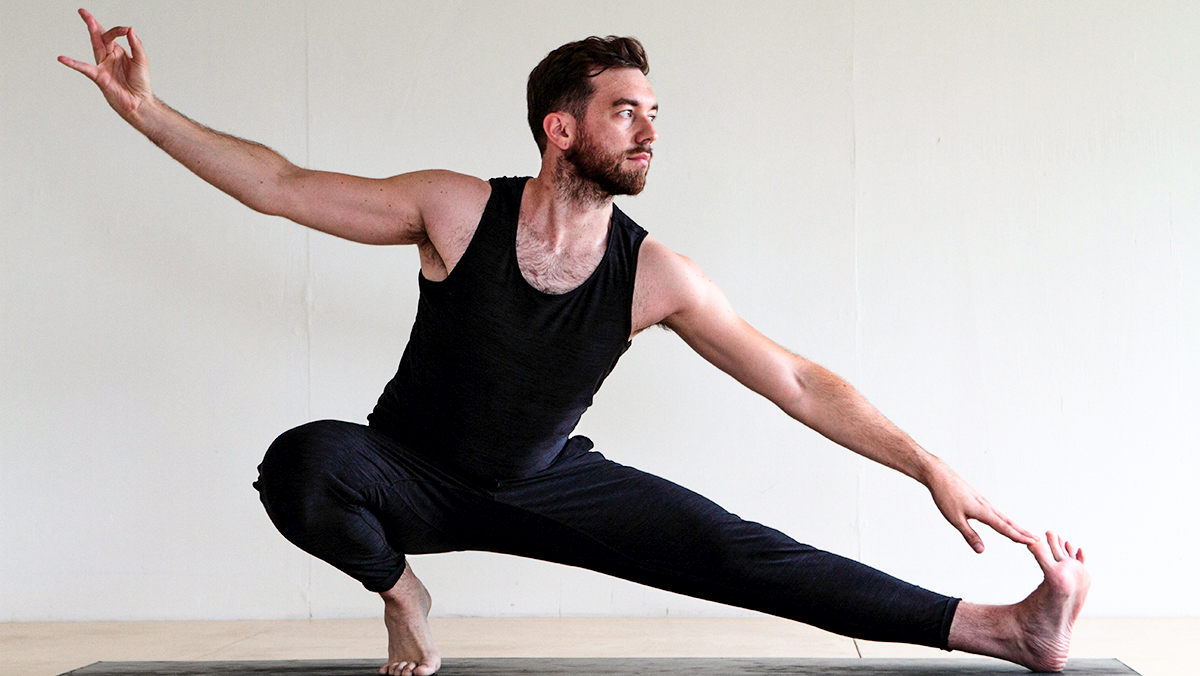
A tailored yoga practice can improve function and reduce pain in arthritic knees. These benefits are due to the improved physical function and biomechanics of the joints. No matter what age or physical condition you are, the poses can be beneficial to anyone. They can also increase joint flexibility. These are some yoga poses that can be used to treat arthritic joints. Listed below are some of the most common types of arthritic knees.
One of the benefits of yoga is that it helps to manage pain by improving breath awareness. It also helps to develop strength and flexibility. Additionally, a person with osteoarthritis must pay attention to their bodies, and yoga can provide an additional perspective to managing symptoms. These techniques can be used to reduce pain, according to research. Even though yoga is not suitable for everyone with osteoarthritis or arthritic knees it can be a good alternative.

This helps align the body and relieves knee pain. It also strengthens the calf muscles and hamstring muscles. It can lower blood pressure, regulate metabolic regulation, and even help with weight loss. It is now being used as an alternative to arthritic knees. Despite its many health benefits, there has been inconsistent research. The effects of yoga on physical function, pain, spiritual relaxation, and other aspects are not reliable. In addition, no meta-analysis has been conducted to assess the effectiveness of yoga for arthritic hips and knees.
Yoga can help with osteoarthritis by providing a complementary therapy to arthritic knees. According to Sharon Kolasinski from the University of Pennsylvania's clinical medicine department, yoga can have many benefits for patients suffering from arthritis. While it can be difficult for many people to engage in rigorous exercise, it is a safe, enjoyable form of exercise.
Setu Bandasana or supported half-moon pose is one of most effective yoga poses to heal arthritic joints. You should align your feet with the wall and place your legs parallel to it. During this pose, you should keep your right foot on the block and bend your right knee. Lift your left knee and bend your left leg.

For arthritic knees, asanas focus on strengthening the legs and hands. Asanas to treat osteoarthritic joints focus on restoring natural positions of the fingers, palms, and hands. Ananas that strengthen quadriceps can help reduce knee joint stress. Yoga may help improve your cardiovascular health. This makes yoga a great complement treatment for osteoarthritis patients.
A tailored yoga program adapted for arthritic knees is a great way to reduce pain and improve leg strength. The exercises can be used by women suffering from osteoarthritis of the knee. A physician should be consulted for anyone suffering from knee osteoarthritis before they begin any type of exercise routine. Women with osteoarthritis of the knees may benefit from a yoga program that is specifically tailored for them. This will help reduce pain and increase the strength of their legs.
FAQ
Is it possible that I am depressed?
Teens often struggle with depression. But, many teens struggle with depression.
This doesn’t mean you’re insane or weak. People who are depressed don't know it. Depression is a medical condition.
There are several kinds of depression. Some people experience only sadness. Other people may experience other emotions as well. There are many levels of severity.
Some people have mild depression while others suffer from severe depression. It's important for people to realize that depression does not necessarily mean bad things. Sometimes, depression can be helpful in coping with stressful situations.
If you are feeling unmotivated, sad or tired, it is a good idea to see a doctor. Your doctor can diagnose and decide if you require treatment.
Why is it important to have a healthy mind?
Work, play, learn, and love. Mental health refers only to our overall health. We're referring to physical, psychological, social, spiritual, and environmental factors that impact us daily. There are many options for taking care of yourself mentally and physically as well as emotionally, spiritually, financially, and socially. You don't have to do everything at once; just start somewhere!
Understanding your current mental health status is the first step in improving it. This quiz will help you determine if you are doing enough to improve your mental health. If your score is low, you may want to make some lifestyle changes.
Suppose you scored high, congratulations! Consider the following tips to improve and maintain your mental well-being.
-
Get enough sleep Your brain will stay sharp and energized if you get enough rest. Get at least 7 hours of sleep every night according to the American Academy of Pediatrics.
-
Exercise Regularly. Exercise releases endorphins into your body, which makes you happy and less likely to stress. Do 30 minutes exercise five times a weeks.
How does mental illness affect my relationships with others?
Your mental state can impact every aspect of your personal and professional life. It can impact your ability to function well at home, school and work. It can also be difficult to develop meaningful relationships when you have mental health problems.
It's easy for people to judge you when you have a mental illness. Sometimes you might avoid social situations because it feels like no one understands.
However, it's important to remember that people want to be around you. They just need the ability to approach you.
If you have trouble connecting with people, it is worth talking to them about what your feelings are. Ask for their guidance and tell them how you feel.
Statistics
- Similarly, while there is some agreement about the boundaries of typical mental disorders 2, there is likely less agreement about those for positive mental health. (ncbi.nlm.nih.gov)
- It does have some influence, but not nearly as much as we might think, so focusing less on attaining wealth will likely make you happier (Aknin, Norton, & Dunn, 2009); (positivepsychology.com)
- More than 40 million adults in the United States have an anxiety disorder, but less than 37% of people seek mental health treatment for their symptoms. (talkspace.com)
- According to the National Alliance of Mental Illness (NAMI), one in five Americans experiences mental health issues which translates to more than 40 million adults a year. (doctorondemand.com)
- Similarly, for positive mental health, there is likely to be substantial agreement about some typical components (e.g., resilience to stress) 6, and controversy about more atypical components (e.g., career consolidation). (ncbi.nlm.nih.gov)
External Links
How To
How to improve memory
Everyone would like to have better memory. Unfortunately, memory loss can happen to anyone at any time. In fact, more Americans than 65 years old suffer from dementia.
It doesn't matter if you have Alzheimer's, dementia or another form of cognitive decline. There are lots of options to help improve your memory. These are the three steps that you can take today to improve your memory.
-
Eat More Fruits & Vegetables. Vegetables and fruit contain vitamins, minerals, antioxidants, fiber, and other phytochemicals that can improve brain function. They also contain vital nutrients that protect against neurological illnesses.
-
Get Enough Sleep. Low sleep quality has been linked both to memory loss, poor concentration, and memory loss. Get seven to eight hours of sleep each night.
-
Go for a walk. Walking increases blood flow to the brain which can improve memory. Walking can help you lose weight, which will make you appear slimmer and healthier.